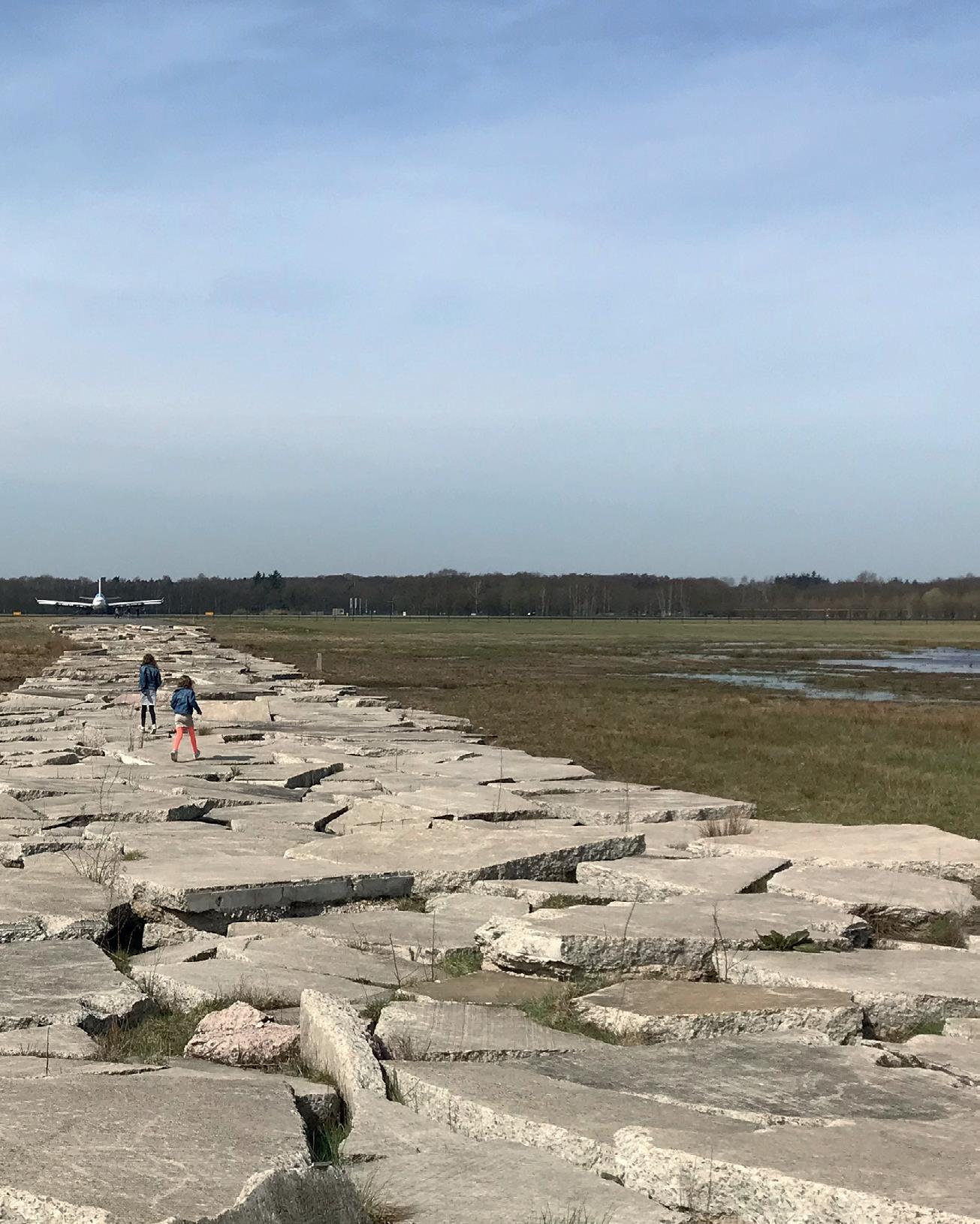
3 minute read
STROLL ENDLESSLY
A SKY FULL OF STORIES
AT THE FORMER AIRBASE OF TWENTHE HIKERS AND BIKERS SHARE A HUGE AMOUNT OF SPACE WITH SKYLARKS AND MEADOW PIPITS. OLD TRACKS AND NEW ART REVEAL THE RICH HISTORY OF THIS AREA.
They won’t fly away, even if it looks like they will. In a neat row, a KLM Boeing 747 and an Air France Airbus 340 are on the track. Like they can take off any minute. In reality they are at what you might call their final resting place. A company called Aircraft End-Or-Life-Solutions will dismantle them.
A sign at the gate (‘landing area- access strictly prohibited’) shows that the discarded aircrafts did not just fall out of the sky. In fact, part of the area, known as Twenthe Airport, will be used for business flights and recreational flights.
IMMENSE AREA So you have to avoid the landing strip, but you can walk everywhere on what was once prohibited territory. An immense area opens up. An area where you can discover nature, history and landscape art. Like the stones that lead you to the socalled ‘Belevingspad’ (experience path): they were part of the very first airport that was opened in 1931.
Nowadays the 130 hectares of military exercise area have been added to the valuable nature that has developed around the field during the last few years. You can spot birds and (gliding) planes, go hiking or biking, enjoy landscape art, look
for rare flora and fauna or experience the mysterious (military) history of the area.
You can also absorb the endless space. Thanks to the maintenance plan, the field transforms into a world of flowers in spring and summer. The skylark will not let you into his territory. His habitat is defined by signs that urge you to stay on the tracks.
EXCITING LOOK A nice place to observe the skylark is the watch tower that rises from the field almost like a ufo. Artist Paul de Kort converted an old fuel storage into a ‘Parallax’. From the top of the open work fuel tanks you have a great view of the surrounding area. Two frog pools - constructed in the shape of bomb craters - light up like blue eyes in the landscape. In the young plantations further down, two American Staffords are roaming around; their boss ignores the fact that they should be on a leash. At the bottom of the hill a tunnel provides an exciting view on the landscape from a whole new level.

Parallax is one of the places where (landscape) artists bring back to life the traces of military history. Guard houses, hangars and the bunkers (loved by bats) are silent witnesses. Where there used to be an old control tower at this pre-war airport, you will now find a new, 13 metre-high watch tower. At the end of the path you can hear lots of noise. In building C-26 they used to test the engines of F-16 jet fighters, now the steel carcass is a piece of art called Doppler. The roaring of a Messerschmidt and the song of a meadow pipit alternate and a former inhabitant tells you how he and his family were banished from the area by the Germans. More stories can be found at the ‘Herinneringspad’ (memorial path), on the strip where the on-board weapons were set. NEW LAYER OF HISTORY Not far away from sound object Doppler are the overgrown fundaments of the old Gefechtsstand, the German command centre during the war. Artist Filip Jonker and architect Michiel de Wit designed hiking tracks along these fundaments. That way visitors add a new layer to the history of this exceptional place in Twente. It is still changing: at the moment they are working on a new watch tower.










